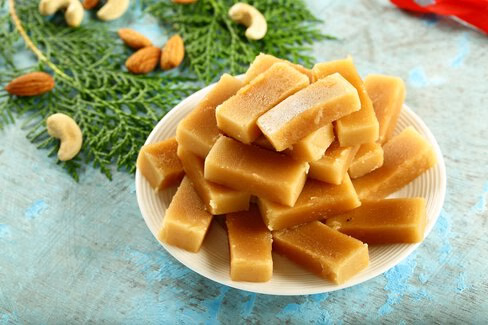| Feature | Detail |
|---|---|
| Name | Musté |
| Flavor | Tangy with mild sweetness |
| Consistency | Thick, syrup-like |
| Primary Uses | Culinary dishes, beverages, desserts, sauces |
| Traditional Origins | Mediterranean, North African cuisines |
| Storage | Cool, dry place; refrigerate after opening |
| Ideal Pairings | Fruits, vegetables, meats, nuts, grains, herbs |
Introduction to Musté
Musté is a unique culinary ingredient gaining attention for its thick, syrupy texture and tangy-sweet flavor. It is highly versatile, making it an ideal addition to both savory and sweet dishes. Whether you’re a home cook, professional chef, or a foodie looking to experiment, musté can transform your ordinary recipes into extraordinary creations.
Its distinct taste allows it to blend effortlessly with a variety of ingredients, while its texture provides richness and body to sauces, glazes, desserts, and drinks. Understanding musté’s characteristics and applications can elevate your cooking game.
A Glimpse into Musté’s History
The origins of musté can be traced to Mediterranean and North African regions, where it was traditionally prepared from fermented fruits or naturally concentrated syrups. Early culinary practices involved boiling down fruits or fermenting them lightly to create a tangy, thick liquid used in cooking, beverages, and even medicinal applications.
Over time, musté became a staple in local kitchens, prized for its ability to enhance flavor without overpowering other ingredients. As trade routes expanded, musté spread to various parts of the world, gradually becoming a symbol of culinary innovation and tradition.
Understanding the Flavor and Texture
Musté’s flavor is its signature feature—a balance of tanginess and mild sweetness that sets it apart from other condiments like honey, syrups, lemon juice, or vinegar. Its consistency is thick enough to cling to food, which enhances presentation and ensures even flavor distribution.
This combination makes it suitable for both sweet and savory applications, offering a subtle complexity that complements rather than dominates a dish. Its tangy note stimulates the taste buds while the sweetness softens sharp flavors.
Culinary Uses of Musté
1. Glazes and Sauces
Musté is ideal for glazes and sauces due to its thick, syrupy texture. It can coat roasted vegetables, grilled meats, and poultry, adding a glossy finish and depth of flavor. A simple mixture of musté, olive oil, garlic, and herbs can transform everyday dishes into gourmet delights.
It is also excellent in pan sauces, helping bind ingredients while adding a nuanced tangy-sweet profile. Musté’s consistency makes it ideal for slow-cooked recipes, ensuring flavors meld beautifully over time.
2. Baking and Sweet Dishes
Musté is a surprisingly versatile baking ingredient. It works well in cakes, tarts, muffins, and sweet breads. Its mild sweetness pairs beautifully with fruits, nuts, and chocolate, adding subtle complexity.
For a simple dessert, drizzle musté over fresh fruit or incorporate it into yogurt for a creamy, flavorful treat. Its thickness ensures it stays in place, creating a visually appealing and delicious addition to desserts.
3. Beverages and Cocktails
Musté is also a fantastic addition to beverages. Its tangy-sweet taste can replace syrups or sugar in drinks, providing natural flavor and richness. Mix it with sparkling water for a refreshing soda or stir it into hot tea for a subtle, aromatic twist.
In cocktails, musté acts as a natural sweetener while balancing acidity or bitterness. Bartenders favor it for its ability to integrate seamlessly into drinks without separating, creating consistent flavor profiles throughout.
4. Salad Dressings and Dips
Musté works beautifully in salad dressings. Combine it with olive oil, mustard, or vinegar to create a tangy, slightly sweet vinaigrette. It enhances greens, roasted vegetables, and grain salads alike.
For dips, mix musté with yogurt, cream cheese, or hummus to create thick, flavorful spreads. Its syrupy texture allows it to cling to vegetables, bread, and crackers, making each bite rich and satisfying.
Health Benefits of Musté
Musté offers more than just flavor. Because it is derived from natural fruits and syrups, it contains antioxidants and compounds that may support digestion and overall wellness. The tanginess can stimulate appetite and aid in digestion, making it a practical addition to meals beyond just taste.
Compared to refined sugar or artificial syrups, musté is a healthier alternative. Using it in moderation provides flavor without excessive processed ingredients, aligning with modern health-conscious cooking practices.
How to Store Musté
Proper storage is key to maintaining musté’s quality. Store it in a cool, dry place before opening. After opening, refrigeration is recommended to preserve flavor and prevent spoilage. Its thick consistency ensures longevity, but proper handling maximizes shelf life.
Because it is concentrated, a small amount goes a long way. This makes it both economical and convenient for home and professional kitchens.
Pairing Musté with Foods
Musté pairs wonderfully with a wide array of ingredients:
- Fruits: Apples, berries, citrus fruits, pears
- Vegetables: Roasted carrots, sweet potatoes, zucchini, bell peppers
- Proteins: Chicken, lamb, fish, tofu
- Spices: Cinnamon, nutmeg, cardamom, cumin, paprika
- Grains and Nuts: Quinoa, rice, almonds, walnuts
The goal is to use musté to enhance flavors, not overshadow them. Its versatility allows experimentation with both traditional and modern dishes.
Musté in Contemporary Cooking
Modern chefs are increasingly adopting musté as a versatile flavor enhancer. Its tangy-sweet profile allows it to work in diverse applications—from Mediterranean-inspired dishes to fusion creations. Musté is used in glazes, sauces, desserts, and cocktails, demonstrating its ability to bridge sweet and savory cuisine.
Restaurants often showcase musté in signature dishes, such as roasted vegetable platters, marinated meats, or specialty desserts. Home cooks can also experiment with it to add depth and creativity to everyday meals.
Making Musté at Home
For those who enjoy DIY cooking, making musté at home is possible. Traditional methods involve boiling fruits like grapes, berries, or dates until concentrated, sometimes incorporating light fermentation to develop the tangy flavor.
Homemade musté allows you to control sweetness, thickness, and tanginess according to taste. While preparation requires patience, the result is fresh, aromatic musté with unparalleled flavor quality.
Mistakes to Avoid When Using Musté
- Overusing Musté: Its flavor is concentrated; start small.
- Incorrect Consistency: Dilute thick musté if needed for dressings or beverages.
- Improper Storage: Refrigerate after opening to prevent spoilage.
- Poor Pairings: Avoid strong artificial flavors or overly bitter ingredients.
Following these guidelines ensures musté enhances your recipes rather than overwhelming them.
Cooking Tips for Musté
- Gradually add musté to dishes to control flavor intensity.
- Use it as a natural sweetener in both sweet and savory recipes.
- Pair with herbs, spices, and complementary ingredients to create depth.
- Explore applications in hot, cold, baked, and roasted dishes for versatility.
Musté vs Other Condiments
Compared to lemon juice, vinegar, honey, or syrups, musté offers a unique combination of tanginess, sweetness, and thickness. Lemon or vinegar can be sharp and acidic, while honey or syrups are purely sweet. Musté provides a balanced flavor that enhances rather than competes with other ingredients.
Its syrupy consistency allows it to coat foods and integrate seamlessly into sauces, glazes, and beverages, offering a consistent flavor throughout the dish.
The Rising Popularity of Musté
Once largely known only in Mediterranean and North African kitchens, musté is gradually being embraced worldwide. Culinary enthusiasts, chefs, and home cooks in North America, Europe, and Asia are discovering its versatility.
As people seek natural, traditional ingredients for modern cooking, musté’s popularity continues to grow. It is now featured in fusion cuisine, desserts, beverages, and even health-conscious recipes.
Conclusion
Musté is a tangy, versatile ingredient that deserves a spot in every kitchen. Its thick, syrup-like consistency and tangy-sweet flavor make it suitable for a wide range of culinary applications, from sauces and glazes to desserts and beverages.
Incorporating musté into your cooking can transform everyday dishes into rich, flavorful experiences. Its history, nutritional benefits, and adaptability make it a timeless ingredient bridging tradition and modern cuisine.
Whether you are a professional chef, home cook, or food enthusiast, musté offers endless possibilities for creativity. Experiment with pairings, try it in new recipes, and let its unique flavor profile elevate your meals. With musté, ordinary cooking becomes an exploration of taste, texture, and tradition.

